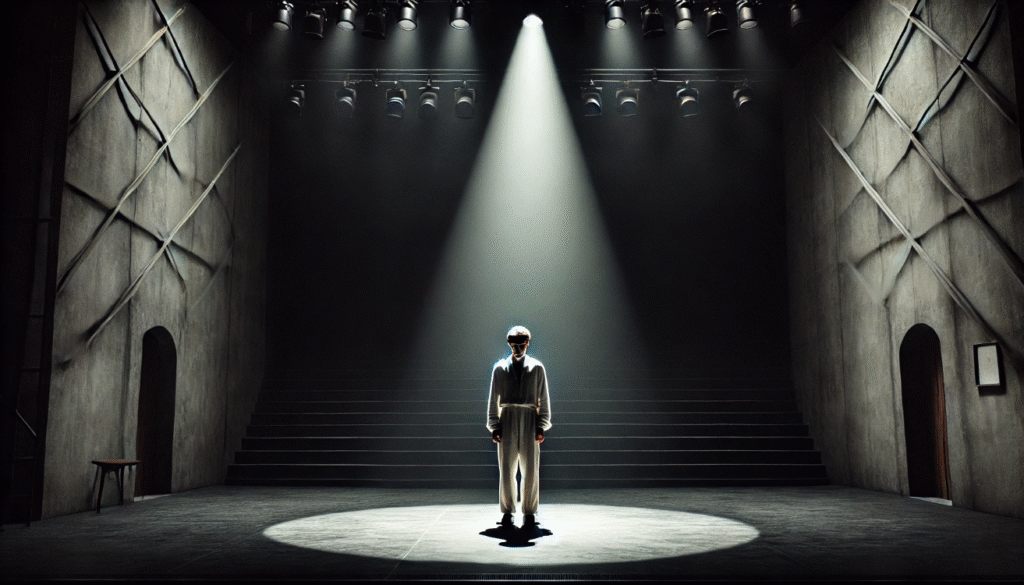 The use of soliloquies to advance the plot have long been celebrated for their ability to captivate audiences and reveal the inner workings of characters’ minds. In this article, we will delve into the masterful techniques that Shakespeare employed to advance the plot, expose character motivations, and highlight key turning points in his plays. The use of soliloquies to advance the plot a crucial role in drama, and Shakespeare’s skillful use of them has left an indelible mark on the world of literature and theater. We will examine the timeless power of the use of soliloquies to advance the plot and their enduring impact on audiences.
The use of soliloquies to advance the plot have long been celebrated for their ability to captivate audiences and reveal the inner workings of characters’ minds. In this article, we will delve into the masterful techniques that Shakespeare employed to advance the plot, expose character motivations, and highlight key turning points in his plays. The use of soliloquies to advance the plot a crucial role in drama, and Shakespeare’s skillful use of them has left an indelible mark on the world of literature and theater. We will examine the timeless power of the use of soliloquies to advance the plot and their enduring impact on audiences.
What is a Soliloquy?
The use of soliloquies to advance the plot is a dramatic device in which a character speaks their thoughts out loud, typically while alone on stage. The use of soliloquies to advance the plot differs from a monologue in that a soliloquy is a form of self-reflection and introspection, while a monologue is a longer speech addressed to other characters. Asides, on the other hand, are brief comments made by a character directly to the audience, often to reveal their inner thoughts or feelings. In drama, the purpose of a soliloquy is to provide insight into a character’s innermost thoughts and emotions, allowing the audience to understand their motivations and internal struggles. This can add depth and complexity to the character and the overall story.
Soliloquies as a Narrative Device in Shakespeare’s Plays:
Driving the Plot Forward:
Soliloquies in literature serve as a way for the character to express their inner thoughts and emotions. In the case of Macbeth’s soliloquy, it introduces the major event of his decision to murder King Duncan. The soliloquy shows Macbeth’s inner turmoil and his descent into darkness, foreshadowing the tragic events that follow. Similarly, in other works of literature, soliloquies can serve as a way to reveal a character’s intentions or state of mind, setting the stage for important plot developments.
Revealing Conflict and Decision-Making:

In many pieces of literature, characters face internal conflicts that drive the plot forward. These dilemmas often revolve around important decisions that the characters must make. For example, in Shakespeare’s “Hamlet,” the titular character grapples with the decision of whether to continue living or to end his own life. This famous “To be or not to be” soliloquy reveals Hamlet’s inner turmoil and the weight of his decision-making process. Internal conflicts and decision-making are essential elements that add depth and complexity to the characters and the overall storyline.
Soliloquies as Catalysts for Action:
Heightening Tension:

Soliloquies, a literary device often used in plays, can effectively heighten tension before pivotal moments in the story. A prime example of this can be seen in William Shakespeare’s play Othello, where the character Iago delivers soliloquies that reveal his deceitful schemes. These moments not only build anticipation for the audience, but also add an element of suspense to the unfolding drama. By allowing the audience to witness the character’s inner thoughts and motivations, the tension is effectively heightened, creating a sense of anticipation for the pivotal moments that are about to unfold.
Shaping Character Arcs:
Soliloquies in literature often serve as a window into a character’s inner thoughts and feelings, allowing readers to witness their transformation over the course of the story. In the case of Richard III opening soliloquy, we see a character who is initially confident and ambitious, but as the play progresses, we witness his descent into paranoia, insecurity, and ultimately, his downfall. This transformation is reflected in his soliloquies, as they provide insight into his shifting mindset and motivations. By examining these soliloquies, we can gain a deeper understanding of how the character arc is shaped and developed throughout the narrative.
Soliloquies and Audience Engagement:
Breaking the Fourth Wall:

Breaking the fourth wall refers to the act of directly involving the audience in the thoughts and plans of the characters. An example of this can be seen in Viola’s soliloquy in Shakespeare’s play Twelfth Night, where she confides in the audience about her disguise and the challenges she faces. This technique allows for a deeper connection between the characters and the audience, and can add an extra layer of understanding to the story.
Creating Dramatic Irony:
Dramatic irony is a powerful tool used in literature and theater to create tension and suspense. It occurs when the audience possesses information that the characters do not, leading to a sense of anticipation and unease. A classic example of dramatic irony is found in Macbeth, where the audience is aware of Macbeth’s plan to murder King Duncan, while the king himself remains oblivious to the impending danger. This creates a heightened sense of tension as the audience watches Macbeth’s reflections and actions leading up to the fateful event, knowing the outcome while the characters remain unaware.
Soliloquies and Thematic Exploration:
In literature, universal themes such as ambition, morality, revenge, and love are often explored through soliloquies, which are powerful monologues that reveal a character’s inner thoughts and feelings. For example, Shylock’s soliloquy in The Merchant of Venice, where he questions the similarities between Jews and Christians, brings depth to the theme of morality and discrimination. Furthermore, interweaving personal struggles with the larger narrative can bring depth to plot development. By delving into a character’s inner conflicts and emotions, authors can create a more nuanced and compelling story that resonates with readers on a deeper level.
Foreshadowing outcomes involves subtly hinting at future events and resolutions in a story. By setting up key events and resolutions in this way, authors can create a sense of anticipation and build tension for readers. This technique can help to create a more engaging and satisfying narrative by preparing readers for important plot developments and allowing them to make connections between different parts of the story. It can also add depth and complexity to the storytelling, as readers are encouraged to think critically about the possible outcomes of the story. Overall, foreshadowing outcomes is an important tool for writers to use in creating compelling and well-crafted narratives.
The Structural Function of Soliloquies in Plot Progression:
Bridging Scenes:
Bridging scenes, also known as soliloquies, are an important tool in theatrical storytelling. They provide continuity between scenes and acts by allowing a character to express their inner thoughts and emotions directly to the audience. By doing so, soliloquies can help to bridge the gap between different parts of a play, ensuring that the narrative flows smoothly and that the audience remains engaged. In the example of Juliet’s soliloquy in Romeo and Juliet, she speaks directly to the audience, providing insight into her feelings and setting the stage for the next part of the story. Overall, bridging scenes through soliloquies can be a powerful way to maintain the momentum and cohesion of a theatrical production.
Foreshadowing Outcomes:
In order to set up key events and resolutions, it’s important to start by identifying the main challenges or conflicts that need to be addressed. Once these are established, it’s necessary to create a clear plan of action for how these issues will be addressed and resolved. This may involve specific milestones or checkpoints to track progress and ensure that the desired outcomes are being met. Communication and collaboration among all involved parties is crucial in order to ensure that everyone is on the same page and working towards the same goals. It’s also important to be flexible and open to adjustments as needed, as unexpected obstacles or opportunities may arise along the way.
Analysis of Key Shakespearean Soliloquies and Their Impact on Plot:
The soliloquies in these plays play a crucial role in providing insight into the characters’ inner thoughts and motivations. In Hamlet, the soliloquies allow us to understand his hesitation and inner turmoil as he grapples with his father’s death and his own desire for revenge. Similarly, Macbeth’s soliloquies in Macbeth provide a window into his descent into madness, as they reveal his inner conflict and growing ambition. In Othello, Iago’s soliloquies are key in understanding his manipulative nature and the driving force behind the narrative’s tragic events. By examining these soliloquies, we gain a deeper understanding of the characters and their eventual actions or downfall.
The Timelessness of Shakespearean Soliloquies:

Soliloquies continue to resonate as timeless storytelling tools due to their ability to provide insight into a character’s inner thoughts and emotions. They offer a window into the character’s psyche, creating a deeper connection between the audience and the story. Influence on modern drama is significant as soliloquies have inspired contemporary plays and films by showcasing the internal struggles and conflicts of characters. They provide a powerful means of conveying a character’s inner turmoil, allowing for a more nuanced and immersive storytelling experience. As a result, soliloquies continue to be utilized in modern storytelling as a way to engage and captivate audiences.
Soliloquies play a crucial role in advancing the plot and revealing the inner thoughts and emotions of characters in Shakespeare’s plays. They provide insight into the characters’ motivations, conflicts, and dilemmas, allowing the audience to understand their complex nature and driving the story forward. Shakespeare’s use of soliloquies is significant in his storytelling as it adds depth and complexity to the characters, creating a more immersive and engaging experience for the audience. By allowing characters to express their innermost thoughts and feelings directly to the audience, soliloquies offer a unique perspective that enhances the overall narrative. Shakespeare’s legacy as a masterful playwright is exemplified through his skillful use of soliloquies to enrich and propel his narratives.













